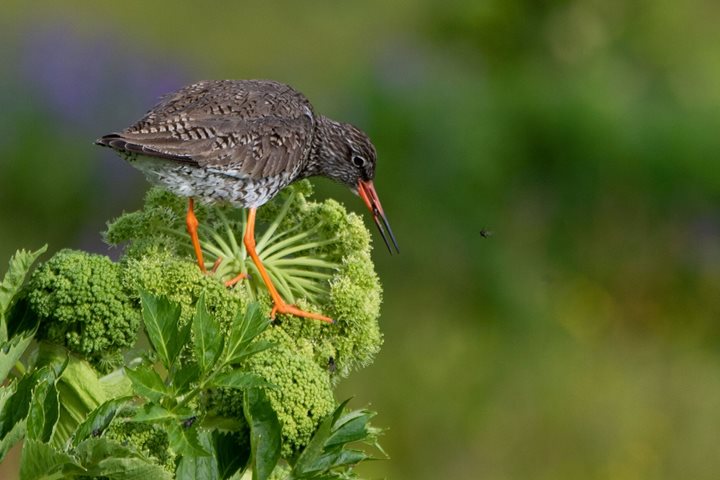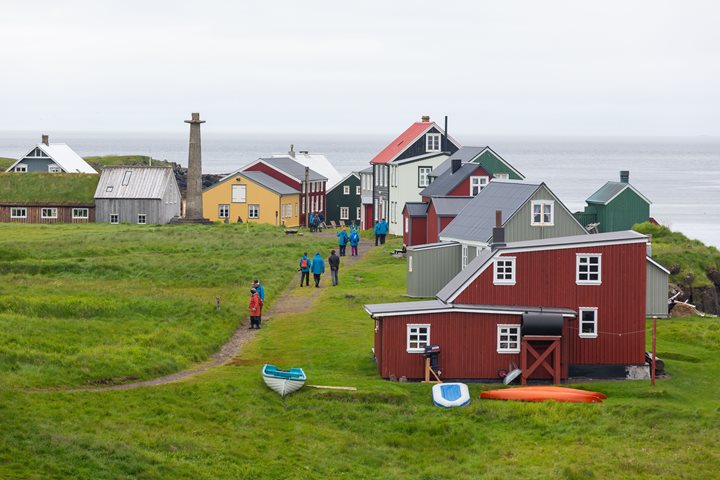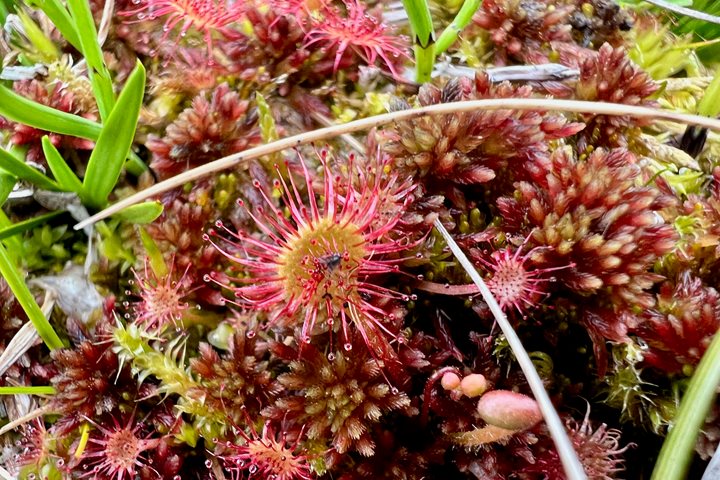The island of Mousa in Shetland is home to one of the most extraordinary Scottish monuments dating back to the Iron Age. Defiant of time, the Broch of Mousa stands strong after more than 2000 years of existence. It is unique in terms of historical significance, state of preservation, and its importance as a nesting site for storm petrels. We did not hide our enthusiasm when expedition leader Peter surprised us with the news that we would visit this iconic site. Soon after Captain Peik anchored National Geographic Explorer near the island, we disembarked onto a pebbly beach and walked along the coastline. We were delighted by sights of nesting oystercatchers, drumming snipes, terns, and auks. Upon arrival to the broch, we found a place inside the structure while we listened to Carol, our archaeologist. We heard stories of those who built and used the broch at different times in history and felt a connection to this distant past of human presence in this part of the world. It was a truly magical experience.
We came back on board the ship and had lunch while we repositioned to Lerwick, the capital of Shetland. From there, we went to explore the landscape of the mainland. We began by travelling across the island towards the southernmost point, Sumburgh Head. As we walked toward the lighthouse, we were welcomed by vast, stunning cliffs buzzing with birdlife. Here we found nesting guillemots and razorbills, northern fulmars, kittiwakes in flight, and very close puffin burrows. After we spent some time taking photographs and enjoying the sunshine and landscape, we then made our way to Jarlshof. This is one of the most remarkable archaeological sites of Shetland and the whole of the British Isles. It encompasses more than 4000 years of human occupation, from prehistoric times all the way to the 17th century. As we walked through the site, we explored the remains of a late Neolithic village, a Bronze Age village, the partial remains of an Iron Age broch similar to the one we visited in Mousa, a wheelhouse, the foundations of a Norse settlement with their famous longhouses, and a medieval farmhouse later fortified in the 17th century. At the end of this day filled with history, archaeology, and nature, we returned to the ship ready to hear about our next destination.







